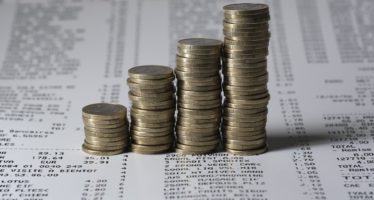Guyana to remain on path to prosperity

Coming off a year of record-breaking economic growth, Guyana’s economy is expected to record another world-leading performance in 2023, with GDP growth forecasted at 34.3%. While the oil-sector will be the largest contributor to growth, the non-oil sector will also be one of the fastest growing in the world.
Although the government has indicated that it has a plan to pursue its development agenda, its’ approach to development planning has been haphazard and will continue to lead to inefficient allocation of resources and unequal patterns of development across the various regions. This will lead to dissatisfaction among varying segments of the population, with some getting too much, some too little, and some mere promises.
That is not the say that the government will not make tremendous strides in leading Guyana to prosperity but just that a more co-ordinated path to growth will probably lead to a greater and more measurable path to prosperity, which will in turn lead to greater political satisfaction.
The country will remain a haven for foreign investors seeking to take advantage of a wealth of available opportunities. Many will have the resources to invest but a sizeable portion will simply be seeking to make noise with the intent of attracting attention. The government, in the meantime, will remain nonchalant about prioritizing specific areas which need to be developed, especially those that are non-oil and non-technology related.
With an increase in foreign investing, the risk of money laundering will rise in spite of the country’s efforts to prevent the crime. Weaknesses in the banking system, newer methods to undermine control efforts, a rise in activities at laundromats such as cambios and casinos, and the mere fact that the country still has a cash-based economy will support continued money laundering.
Efforts to digitize financial transactions will continue at a healthy pace but will remain at a formative stage over the year. However, it will require a set of more comprehensive money laundering controls as digitization is not a panacea for preventing money laundering but rather an accelerator.
As the economy steams ahead, oil will remain the primary growth driver, with the non-oil based sectors, particularly the industrial and construction sectors showing improvement over 2022. Agriculture, the principal non-oil sector, will struggle to show marked improvement over 2022 in spite of the government’s commitment to promote the sector’s development. Poor strategic planning and resource allocation, combined with continued flooding and a shortage of labor will continue to hamper the sector’s growth.
Oil production is forecasted to increase to over 360,000 barrels per day in 2023 with estimates as high as 500,000 barrels per day, while oil and gas revenues will edge close to US$2 billion for the year. With a current reserve of 11 billion barrels of oil, the government has announced that it will be licensing another 14 offshore oil blocks early in the New Year, which has the potential to vastly increase production.
On the agriculture front, the government will continue to make concerted efforts to develop and diversify the agriculture sector, the country’s most important non-oil sector. It will strive to take advantage of regional trade opportunities in food products and noted that the country has a golden opportunity for Guyana to finally realize its potential as the breadbasket of the Caribbean based on the region’s quest to cut its extra-regional food import bill by 2025. In fact, the government will enact a new food security bill in 2023 that will set some parameters around its food security efforts.
Rice, which remains the most viable agricultural crop, will continue to benefit from improved drainage and irrigation, and expanded research on new high yielding varieties, and seed production. The other crops sector, on the other hand, will continue to benefit from extended government support to the private sector to produce non-traditional crops such as corn, soya, coconuts, broccoli, cauliflower, spices, citrus, and fresh flowers.
The government will also remain committed to resuscitating the ailing sugar industry and will remain focused on reopening and recapitalising the closed estates; rationalising cost structures; diversifying the sugar sales mix to maximise earnings; re-engaging previously displaced workers; and repositioning the industry on a sustainable path to profitability.
Energy generation will remain a primary focus during the year. The Amaila Falls Hydroelectric Project (AFHP) is slated to come back on stream, with investors from the USA and Canada set to fund the project
The much-touted Gas-to-Energy Project is also set to come to fruition. The government announced in December that following successful negotiations that have resulted in a reduced cost, it was finalising a US$759 million contract for US bidders to build the 300 MW Combined Cycle Power Plant and a Natural Gas Liquids (NGL) Plant at Wales.
Plans to construct an oil refinery as well as a dock facility to accommodate increased shipping should also begin to take shape during the year.
The hotel industry will continue to expand to accommodate the influx of visitors to Guyana. It is expected that three internationally branded hotels and some eight additional hotels will probably be completed by the end of the year.
In his New Year message to the nation, President Irfaan Ali announced that he plans to intensify the digital transformation of Guyana, including plans relating to coding, telemedicine, smart classrooms, virtual education for the hinterland; electronic health records management, and establishing a single window for business and building permits. He also said work will commence on a hospitality institute; healthcare will be boosted and more training will be provided to teachers.
In the agriculture sector, he said that shrimp production will be increased, more shade houses will be used and the Ministry of Agriculture will promote large-scale cultivation of high-value crops, such as broccoli and cauliflower, and large-scale dairy production.
At a personal level, the government will continue to dole out a myriad of incentives to improve the livelihood of the population at large. Guyanese have come to expect handouts from the government as a result of its oil wealth. Yet some segments of the population will remain dissatisfied with the handouts that are made.
In the meantime, optimism about the country’s future will continue to be clouded by persistent attempts by the country’s main opposition party to incite racial tensions which has historically plagued by racial divisions.
Allegations of corruption will continue to surface throughout the year while crime will remain a huge social problem.
In spite of its rising oil revenues, Guyana’s external as well as its domestic public debt will continue to rise during the year. In fact, the country’s total public debt is currently at its highest level in the last decade. However, the country’s debt as a percentage of its sharply rising GDP – resulting from higher oil revenues – will continue to fall as the country will have a greater ability to repay its debt.
On the political front, the alliance between APNU and the AFC will end while APNU will continue to be in disarray. Local Government Elections will be held during the year but disputes over the voter’s list will taint the results and create court challenges which are the order of the day in Guyana.
It is anticipated that the long-standing Guyana-Venezuela border issue will be settled before the end of the year.
In spite of substantial spending on drainage and irrigation infrastructure, the country will continue to face periodic flooding, putting households at risk. While flood control planning is improving, the task at hand will remain challenging. Evidently, poor planning, coordination and implementation will leave much to be desired.
Crime, meanwhile continued unabated, creating fear among the population – although the government will remain in denial that crime is rising.
All in all, Guyana appear set for a prosperous future which needs careful management. The government will remain popular in spite of efforts to taint its reputation. The lack of strategic planning could, however, could however put holes in its efforts. Attention should be paid to the host of social problems – from crime, to drugs to prostitution to money laundering – which will plague the country if left unattended.
Dwarka Lakhan
Dwarka Lakhan is a pioneer in emerging markets journalism in Canada. His first emerging markets article, “Africa Joins Ranks of the Emerging,” appeared in Investment Executive, Canada’s leading newspaper for financial advisors, in September 1994. Since then he has written hundreds of articles on the full spectrum of emerging markets and has conducted more than two thousand interviews with emerging and frontier markets investment professionals.
Related Articles
Diversifying Guyana’s non-oil economy tough without a development plan
As Guyana strives to diversify its rapidly growing oil-based economy, the government has embarked on an ad hoc spending spree,
Total public debt rising, not falling
Contrary to misleading headlines in the local press, Guyana’s external as well as its domestic public debt have been rising
2022 Guyana National Budget – Heavy on Higher Living Standards (Part 1)
Part 1 of this column reviews social measures announced in Guyana’s 2022 national budget. Part 2 will review major development



